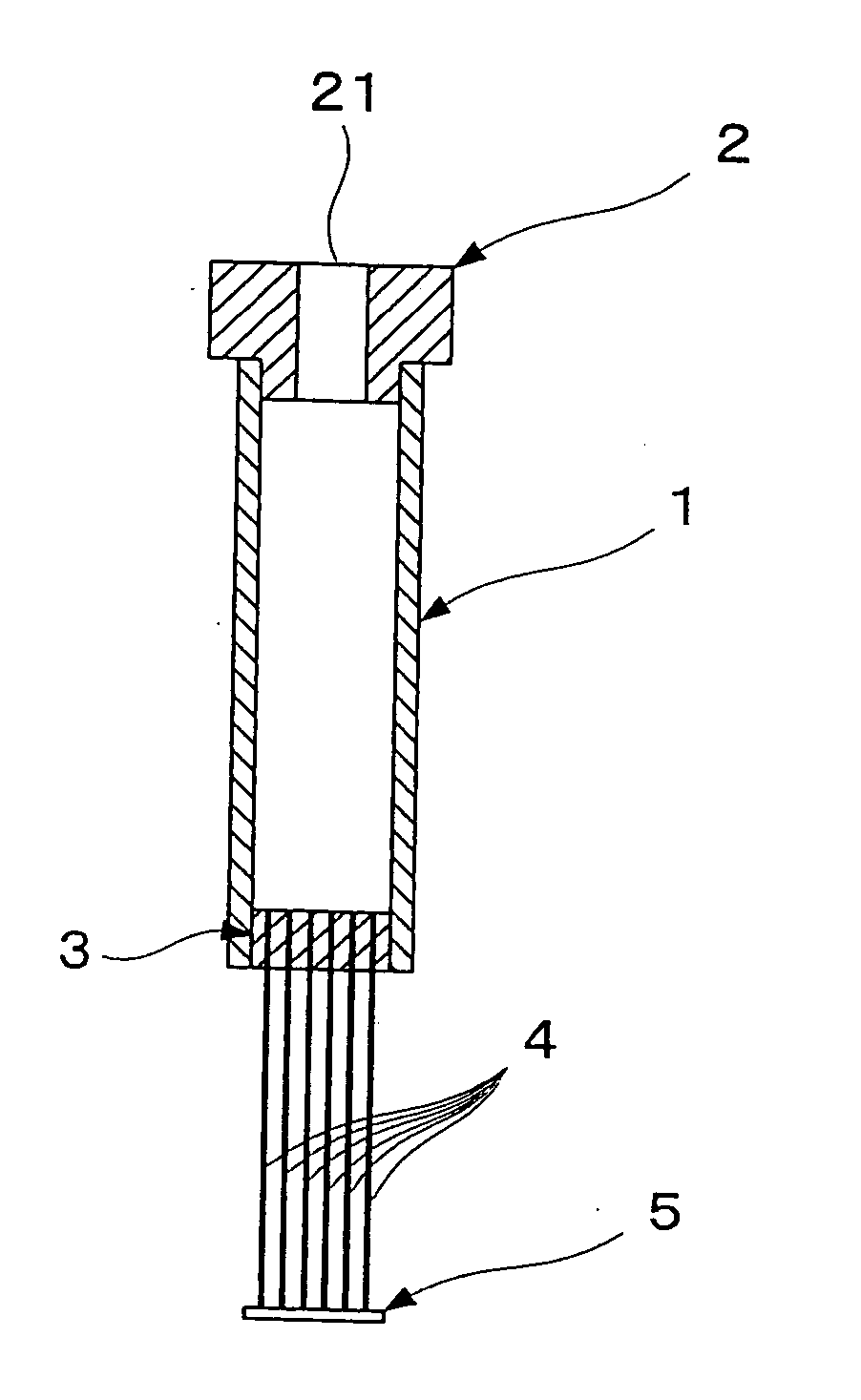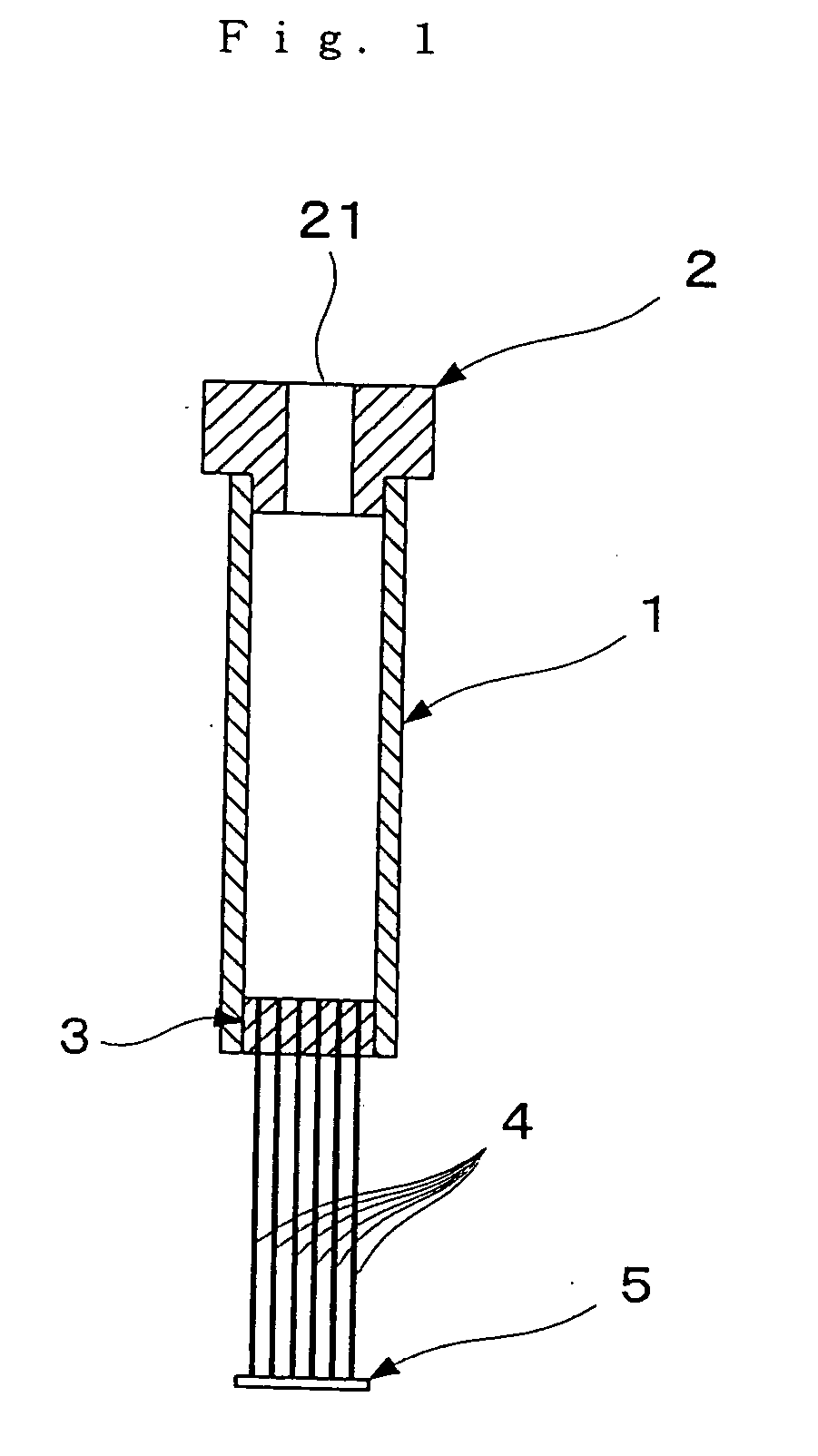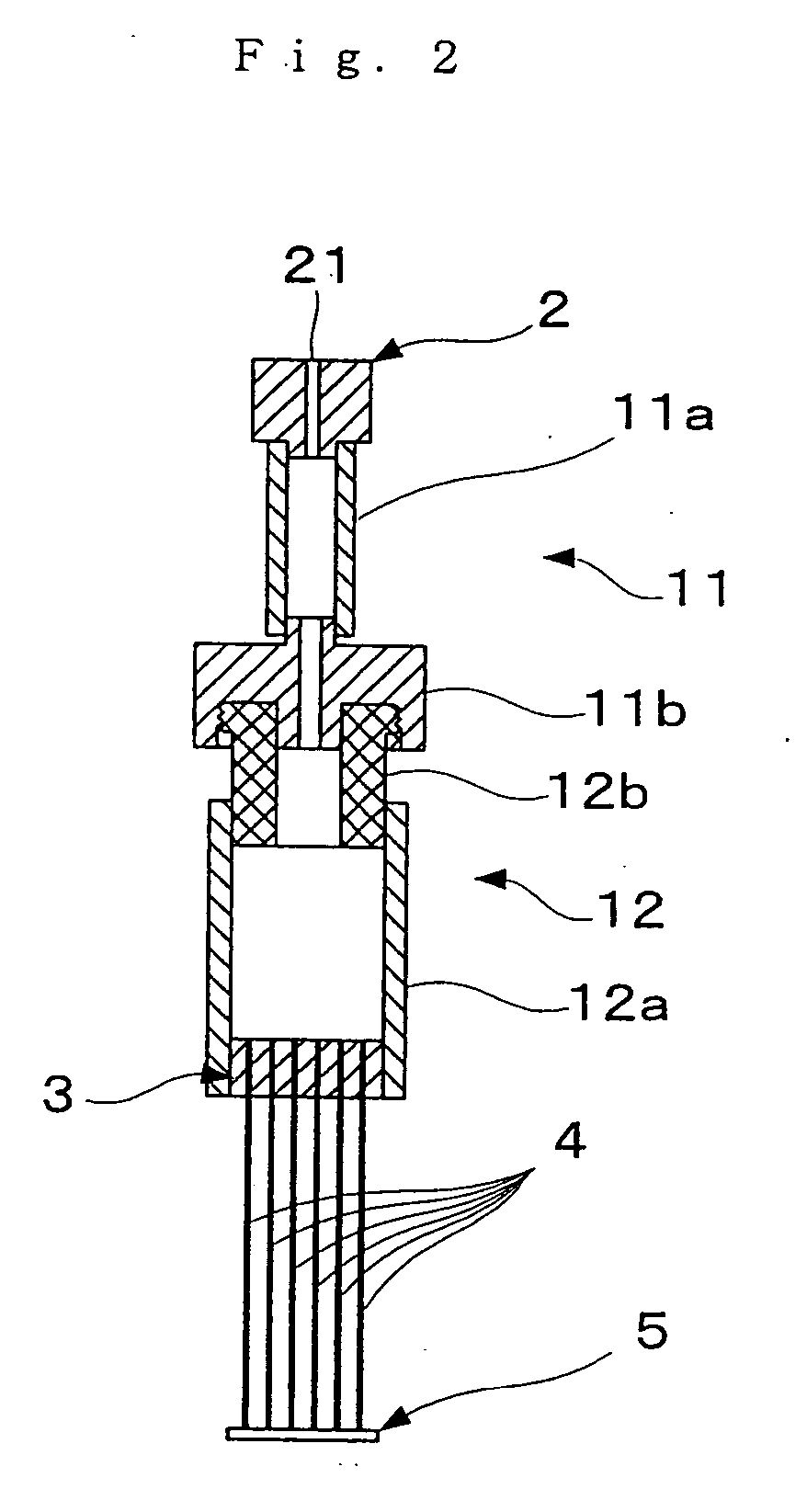Methods of culturing, storing, and inducing differentiation in cells, instrument for use in the methods, method of using the instrument, and medical biomaterial
a technology of cell culturing and cell storage, applied in the field of hollow fiberpossessing instruments, can solve the problems of difficult to maintain the functions originally possessed by cells, difficult to maintain the functions of cells, and prone to loss of functions, etc., to suppress the loss of cells' functions during storage and the loss of cells' functions
- Summary
- Abstract
- Description
- Claims
- Application Information
AI Technical Summary
Benefits of technology
Problems solved by technology
Method used
Image
Examples
manufacturing example 1a
Manufacture of Hollow Fiber-Possessing Instrument
[0208] Hollow fibers for blood plasma separation made of cellulose triacetate (AP250N15 type Toyobo Co., Ltd.; inside diameter 285 μm, outside diameter 387 μm, membrane thickness 51 μm, pore size 0.2 μm) were used as the hollow fibers. One end of each of six such hollow fibers of length approximately 7 cm was sealed by silicone bonding to form a sealed part 5. The other end was bonded by silicone bonding to bundle the hollow fibers together, and then the bundle was inserted into a sealing part silicone tube of outside diameter 4 mm. Next, cutting was carried out with a scalpel, thus forming an opening part in each hollow fiber 4. The sealing part silicone tube in which the hollow fibers had been fixed was fitted into a silicone tube of inside diameter 4 mm and length 15 mm used as an outflow side flow tube 12a, and gaps between the two tubes were filled up with a silicone resin. Next, the silicone tube 12a was connected to a female-...
example 1a
Culture of Cell Aggregates
[0210] 10 ml of a serum-free medium (HSFM) comprising 13.5 g / l of Dulbecco's modified eagle medium (DMEM; Gibco), 60 mg / l of proline, 50 ng / ml of EGF (Toyobo Co., Ltd.), 10 mg / l of insulin (Sigma), 7.5 mg / l of hydrocortisone (Sigma), 50 μg / l of linoleic acid (Sigma), 100,000 U / l of penicillin G potassium (Nacalai Tesque, Inc.), 100 mg / l of streptomycin sulfate (Nacalai Tesque, Inc.), 1.05 g / l of sodium hydrogencarbonate (Nacalai Tesque, Inc.) and 1.19 g / l of HEPES (Nacalai Tesque, Inc.) was put into a centrifuging tube. The hollow fiber bundle of a hollow fiber-possessing instrument manufactured as described above was immersed in the HSFM, and the HSFM was sucked in using an injection syringe, thus eliminating air bubbles from the hollow fiber lumens and also replacing the water in the hollow fiber lumens with HSFM.
[0211] Primary rat hepatocytes that had been prepared using a collagenase digestion method were suspended in the above-mentioned HSFM to form ...
example 1b
[0217] 5×105 primary rat hepatocytes that had been prepared using a collagenase digestion method were injected into the lumens of hollow fibers for blood plasma separation made of cellulose triacetate (AP250N15 type made by Toyobo Co., Ltd.; inside diameter 285 μm, outside diameter 387 μm, pore size 0.4 μm), and a centrifugal force of 60×G was applied for 90 seconds, thus forming cell aggregates in the hollow fiber lumens.
[0218] Six such hollow fibers of length 3 cm having hepatocyte aggregates filled therein were put, in a state with both ends sealed, into a 35 mm-diameter culture dish (Falcon), and tissue body formation was induced by carrying out culture with shaking for 2 days on a shaker under an atmosphere of 5% carbon dioxide and 95% air in a serum-free medium (HSFM) obtained by adding 60 mg / l of proline, 50 ng / ml of EGF (Toyobo Co., Ltd.), 10 mg / l of insulin (Sigma), 7.5 mg / l of hydrocortisone (Sigma), 50 μg / l of linoleic acid (Sigma), 100,000 U / l of penicillin G potassium ...
PUM
| Property | Measurement | Unit |
|---|---|---|
| size | aaaaa | aaaaa |
| size | aaaaa | aaaaa |
| thickness | aaaaa | aaaaa |
Abstract
Description
Claims
Application Information
 Login to View More
Login to View More - R&D
- Intellectual Property
- Life Sciences
- Materials
- Tech Scout
- Unparalleled Data Quality
- Higher Quality Content
- 60% Fewer Hallucinations
Browse by: Latest US Patents, China's latest patents, Technical Efficacy Thesaurus, Application Domain, Technology Topic, Popular Technical Reports.
© 2025 PatSnap. All rights reserved.Legal|Privacy policy|Modern Slavery Act Transparency Statement|Sitemap|About US| Contact US: help@patsnap.com



